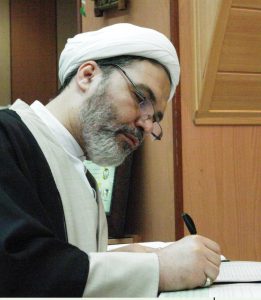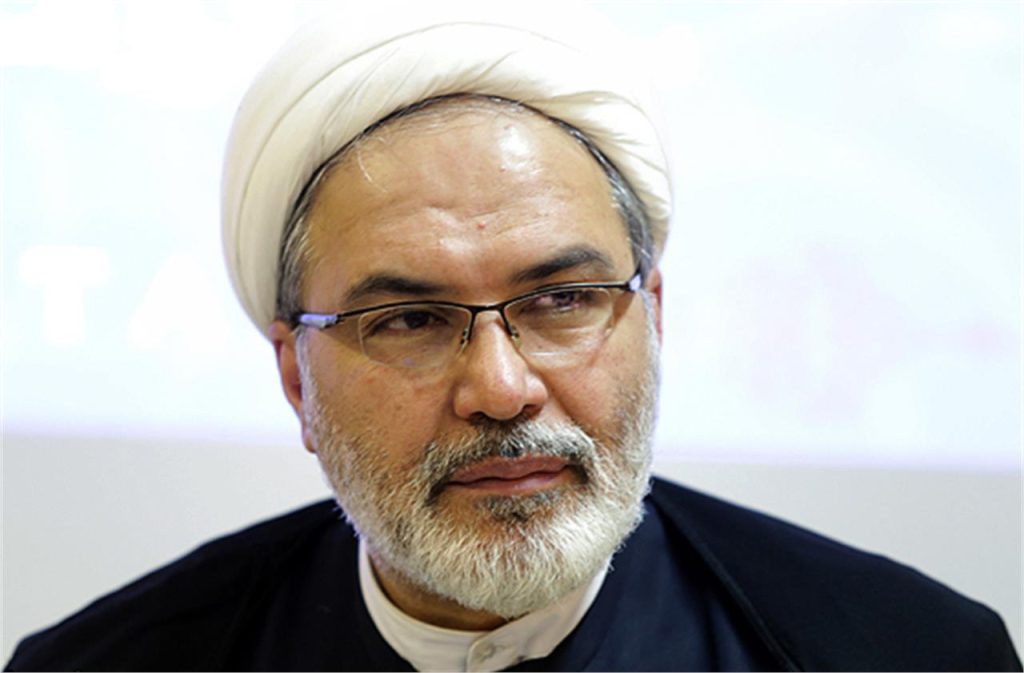By Hamid Reza Arbab Soleimani. Qom, Iran: University of Religions and Denominations, 2021. Pp. 58. Paper, 1,000,000 IRR.
Jesus and Mary are two important and fundamental figures in Christianity, with many verses in the Quran describing and outlining their roles. These two figures, like Christianity itself, hold a high position in Islam as well.
Numerous works have been written, but what distinguishes this writing is that the author’s approach, free from any bias and hatred, with realism and a spirit of justice, seeks to discuss the life of “Jesus and Mary” using the Quran and to create unity and brotherhood between Muslims and Christians.
The author has devoted years to specialized studies on the religion of “Christianity” and has written works such as “A Common Word” (2021), in which the commonalities between Islam and Christianity are explored.
 This work is divided into two main sections. The first section is dedicated to the discussion about Mary. Among the topics addressed in this section are the manner of Mary’s birth as explained by verses 35 and 36 of Surah Āl-ʿImrān, along with relevant narrations. According to verse 37 of the same surah and various narrations, Mary was raised under the guardianship of Zechariah. She was continuously engaged in worship and devotion to God in her sanctuary. One of the characteristics that the Quran attributes to Mary is her communication with angels. This work, drawing on verses 16-26 of Surah Maryam, details the manner of Mary’s pregnancy and the miraculous birth of Jesus through the intervention of a divine angel. According to verses 24-28 of Surah Maryam, after giving birth, Mary experienced severe emotional and psychological distress. God commanded her to remain silent so that her son, Jesus, could defend her purity from the cradle, at a time when her people were filled with doubt and judged against her. One of the remarkable aspects of the Quran is that Mary is the only woman mentioned by name in more than 20 surahs and approximately 30 verses. In verse 42 of Surah Āl-ʿImrān, she is referred to as God’s chosen one and the leader of all women in the world. At the end of this section, it’s discussed the similarities and characteristics shared between the Quran and the Gospels regarding Mary. These include the dialogue between the divine angel and Mary, the angel’s announcement of Jesus’s birth to her, and Mary’s astonishment at this news. Additionally, it’s mentioned that, unlike the Gospels, the Quran makes no mention of Joseph the Carpenter. In the second section of this work, the author discusses Jesus. Initially, the focus is on his birth, heralded by the angels to Mary as described in Surahs Āl-ʿImrān and Maryam. In the following, the aspects of naming Jesus as the Messiah are explained, and it’s stated that it is known from the books of the Israelites that “Messiah” means “blessed”.One of the other topics discussed in this section is the creatorship or creaturship of Jesus. The author, according to the verses of the Quran, says that the birth of Jesus was a miracle and had a divine origin similar to that of Adam. He was created and sent by God and was the son of Mary. Another topic discussed in this work is the concept and origin of the belief in the “Trinity”. The author explains that the belief in the Trinity has been explicitly rejected in the Quran, and throughout Christian history, the issue of the Trinity has been challenging and controversial. The author then refers to some of the miracles of Jesus in the Quran, such as creating a bird from clay, healing the congenitally blind, raising the dead, and the descent of the heavenly table. However, the latter story as depicted in the Quran does not exist in the Gospels. The author concludes by introducing the disciples as the companions of God alongside Jesus in the Quran and the Gospels, engaged in struggling against disbelief, and never compromising or surrendering in the face of the enemies of God.
This work is divided into two main sections. The first section is dedicated to the discussion about Mary. Among the topics addressed in this section are the manner of Mary’s birth as explained by verses 35 and 36 of Surah Āl-ʿImrān, along with relevant narrations. According to verse 37 of the same surah and various narrations, Mary was raised under the guardianship of Zechariah. She was continuously engaged in worship and devotion to God in her sanctuary. One of the characteristics that the Quran attributes to Mary is her communication with angels. This work, drawing on verses 16-26 of Surah Maryam, details the manner of Mary’s pregnancy and the miraculous birth of Jesus through the intervention of a divine angel. According to verses 24-28 of Surah Maryam, after giving birth, Mary experienced severe emotional and psychological distress. God commanded her to remain silent so that her son, Jesus, could defend her purity from the cradle, at a time when her people were filled with doubt and judged against her. One of the remarkable aspects of the Quran is that Mary is the only woman mentioned by name in more than 20 surahs and approximately 30 verses. In verse 42 of Surah Āl-ʿImrān, she is referred to as God’s chosen one and the leader of all women in the world. At the end of this section, it’s discussed the similarities and characteristics shared between the Quran and the Gospels regarding Mary. These include the dialogue between the divine angel and Mary, the angel’s announcement of Jesus’s birth to her, and Mary’s astonishment at this news. Additionally, it’s mentioned that, unlike the Gospels, the Quran makes no mention of Joseph the Carpenter. In the second section of this work, the author discusses Jesus. Initially, the focus is on his birth, heralded by the angels to Mary as described in Surahs Āl-ʿImrān and Maryam. In the following, the aspects of naming Jesus as the Messiah are explained, and it’s stated that it is known from the books of the Israelites that “Messiah” means “blessed”.One of the other topics discussed in this section is the creatorship or creaturship of Jesus. The author, according to the verses of the Quran, says that the birth of Jesus was a miracle and had a divine origin similar to that of Adam. He was created and sent by God and was the son of Mary. Another topic discussed in this work is the concept and origin of the belief in the “Trinity”. The author explains that the belief in the Trinity has been explicitly rejected in the Quran, and throughout Christian history, the issue of the Trinity has been challenging and controversial. The author then refers to some of the miracles of Jesus in the Quran, such as creating a bird from clay, healing the congenitally blind, raising the dead, and the descent of the heavenly table. However, the latter story as depicted in the Quran does not exist in the Gospels. The author concludes by introducing the disciples as the companions of God alongside Jesus in the Quran and the Gospels, engaged in struggling against disbelief, and never compromising or surrendering in the face of the enemies of God.

This work offers useful and concise information about Jesus and Mary in the Quran. However, the title, “The Visage of Jesus and Mary in the Quran” does not fully encompass the author’s use of existing narrations. Given the comparative approach adopted in parts of the book, a more encompassing title would have been appropriate. However, another important point is the concept of “Trinity”. The author has equated it with the belief in three gods and polytheism, which is not the case.
